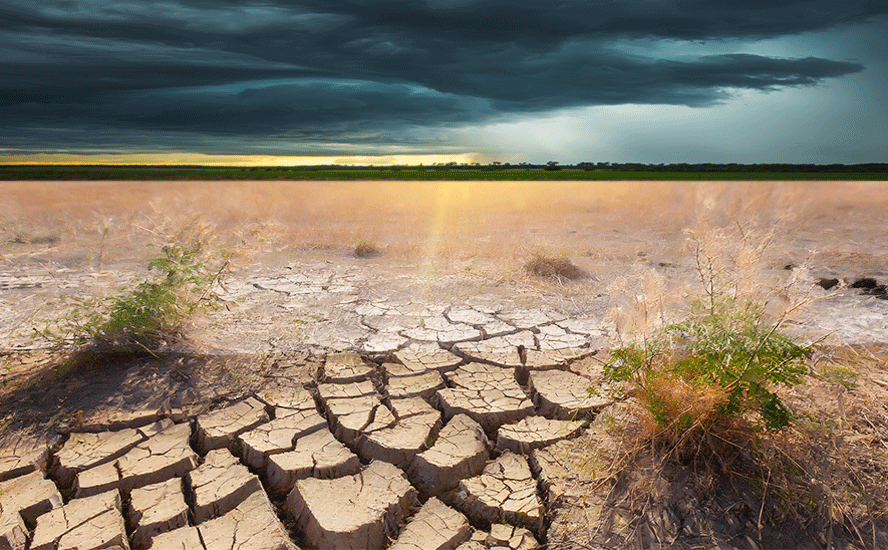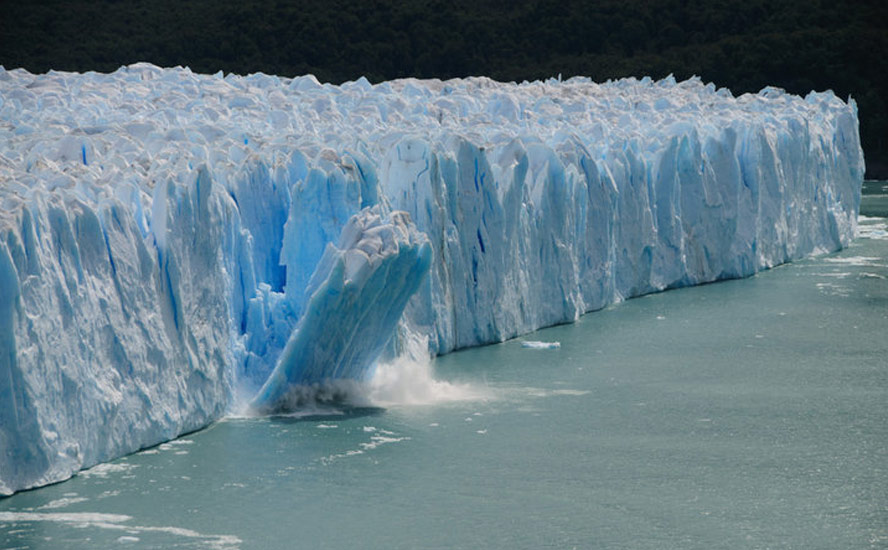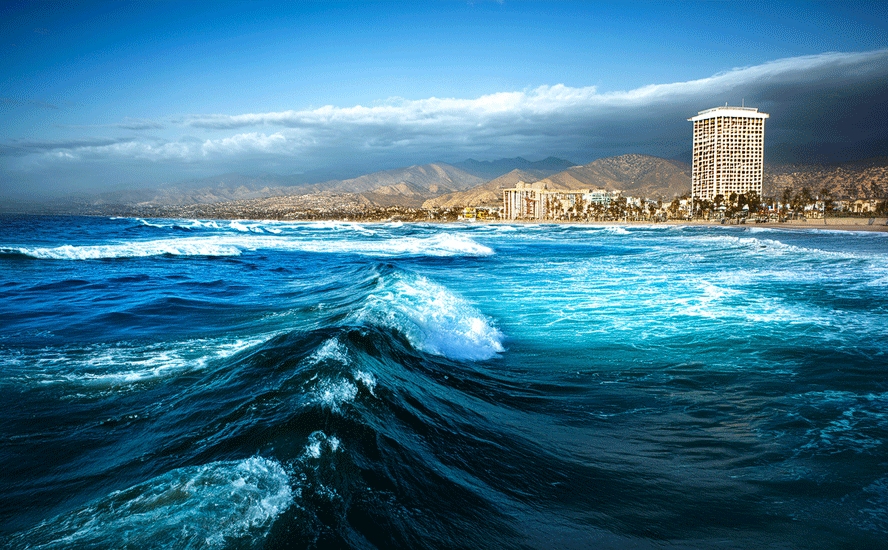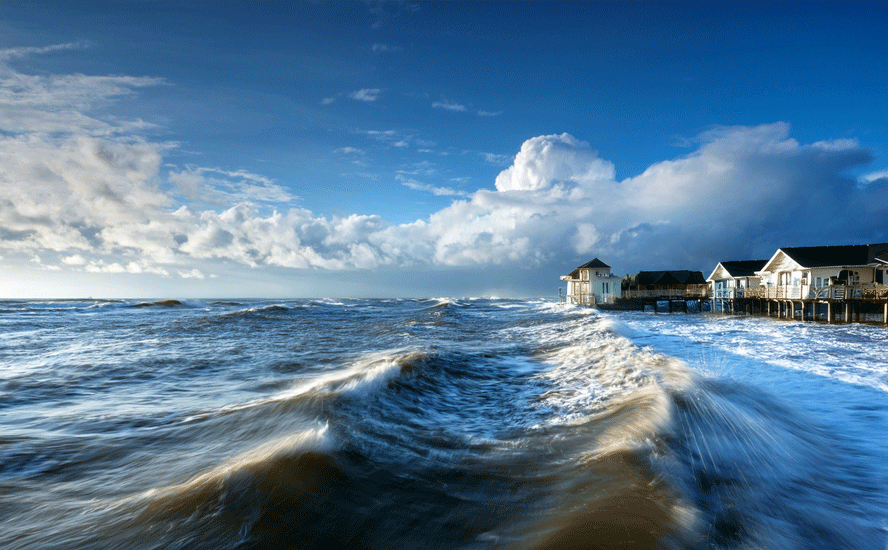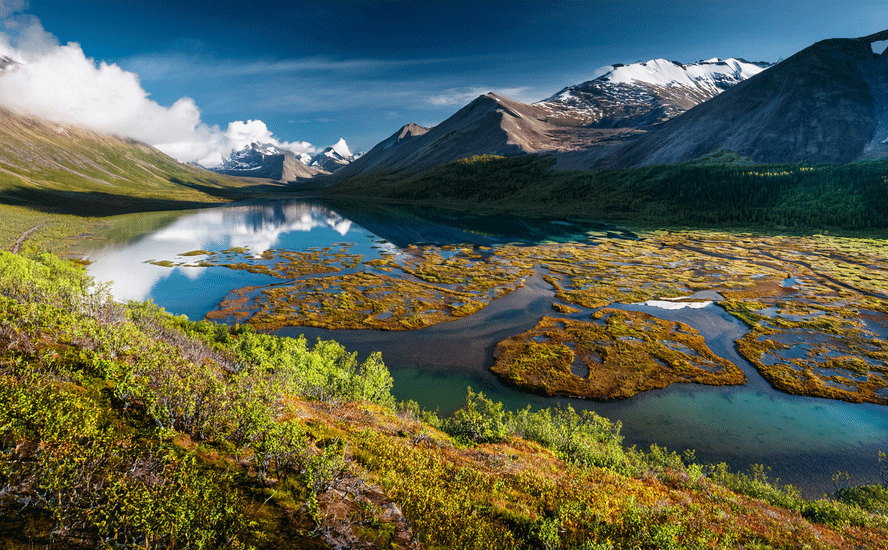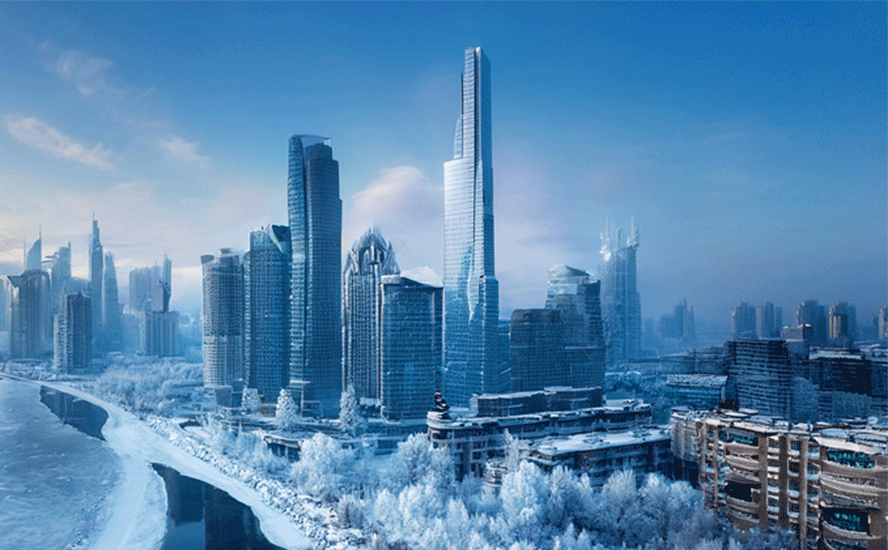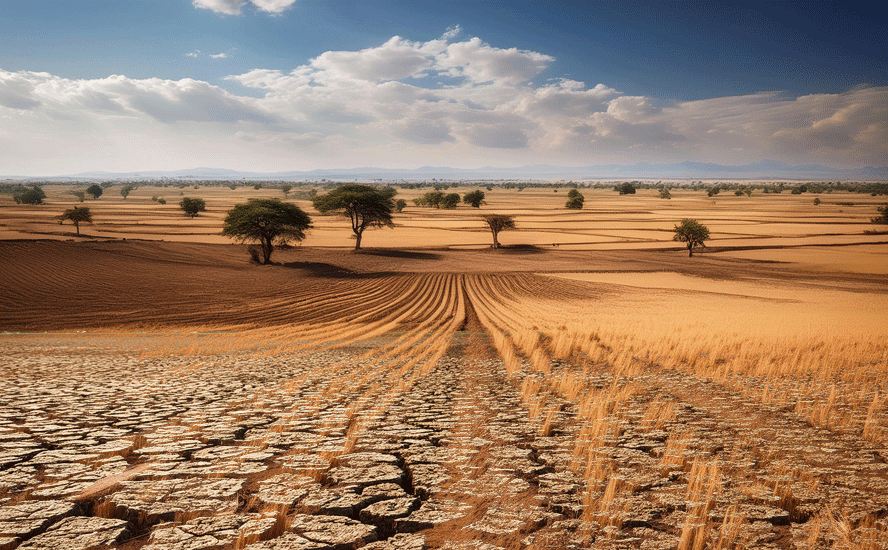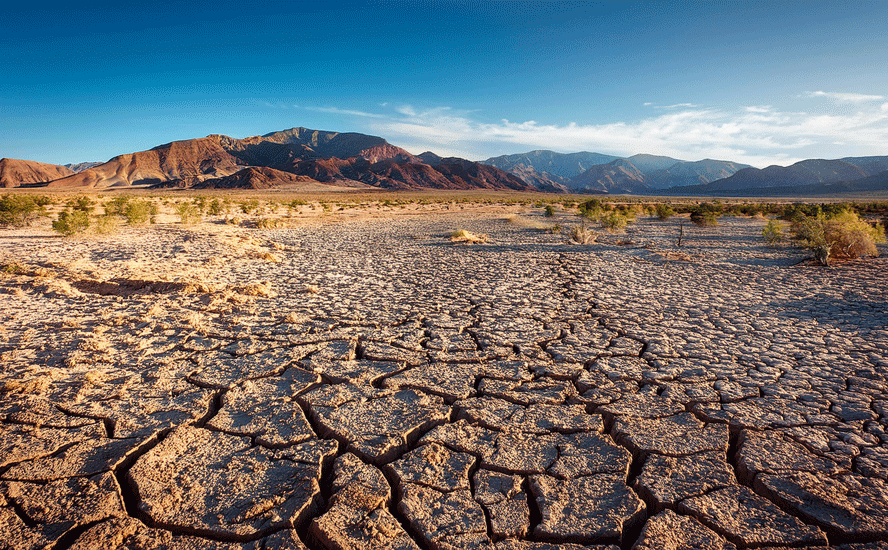Cold, rainy weather likely won’t prevent droughts in Western Canada – Richard Mills
2024.05.30
Cooler temperatures and rain over the past two weeks are a welcome reprieve in British Columbia and Alberta, which experienced a mild winter and low snowpack, leading to fears of a repeat of last summer’s weather, including droughts, water shortages and forest fires.
But climate scientists say the inclement weather isn’t likely to dislodge the current drying trend, a holdover from the El Nino climate phenomenon that started in June 2023.
While La Nina is likely to replace El Nino, the change isn’t expected to happen until after the summer.
El Nino and La Nina
It’s been well-established that warmer, or colder-than-average ocean temperatures have an influence on weather. According to the National Oceanic and Atmospheric Administration (NOAA), El Nino is a climate pattern associated with the warming of the ocean surface off the coast of South America.
During winter, this leads to wetter conditions than usual in the southern US and warmer, drier conditions in Canada.

El Nino is shorter-lived than La Nina, usually lasting nine months to a year versus one to three years for the cooling phenomenon.
During La Nina, colder ocean waters appear off the coasts of South America near Ecuador and Peru. This results in cooler air over the west coast of North America, and drier air in the southern United States.
Transition period
We are currently in the process of transitioning from El Nino to La Nina.
According to Hossein Bonakdari, an associate professor of civil engineering at the University of Ottawa, and an expert on climate change, forecasts suggest an 80% chance of shifting to ENSO-Neutral conditions, meaning neither El Nino nor La Nina, by mid-2024 (April to June), followed by an almost 60% chance of La Nina appearing between June and August.
The transition we are currently in may explain the unseasonably cold, wet conditions being experienced across BC and Alberta.
Heavy rainfall moved into BC’s south coast in mid-May, leading to concerns over flash floods. The B.C. Wildfire Service said cooler, wetter conditions allowed crews to make progress on fires in the province’s northeast, but warned that much of BC remains “unseasonably dry.”
Calgary suddenly went from drought to flood concerns, as rains engorged the Elbow and Bow river catchments to 130% of normal. A few months ago, they were sitting at one-in-60-year dry conditions.
A City manager told Global News that reservoirs are releasing water downstream at normal rates, but “that could change in a hurry” in a big flow event. The City pre-emptively lowers reservoirs this time of year to account for the melting of the snowpack.
According to The Weather Network’s national spring overview, “this season… we anticipate even more dramatic temperature swings and bursts of winter-like conditions disrupting the path to consistent warmth.”
In Alberta, “the temperature patterns are expected to be even more changeable than normal, with periods of colder-than-normal temperatures and a risk for a few high-impact, late-winter-like events that will interrupt the mild pattern at times.” However, “Drought continues to be a major concern for much of the province, and wildfires will be an increasing concern late in the season.”
“The transition from El Niño to La Niña is expected to lead to cooler temperatures during the final months of 2024, especially across the Prairies, and a change in the jet stream that could lead to increased precipitation for western Canada, Ontario and Quebec,” Professor Bonakdari said at the end of March.
He noted British Columbia may experience drier-than-normal conditions, highlighting wildfire risks, while Alberta faces concerns over drought and potential late-season fires.
Early-season fires
Alarmingly, Bonakdari’s prediction has already come true.
2023 was the worst year for forest fires in both Canada and British Columbia. Last September, CBC News reported more than 15 million hectares were destroyed by fire across the country, doubling the previous record, 7.6 million ha in 1989.
Wildfires burned 24,900 square kilometers in BC, nearly double the 2018 record of 13,600 square km. That’s an area almost the size of Vancouver Island. Major fires included Donnie Creek, the province’s largest-ever blaze at a staggering 5,800 square km.
The Vancouver Sun noted that as of Dec. 28, the BC Wildfire Service counted 106 fires still burning. Called “zombie fires”, they go underground and smoulder through the winter, then some roar back to life in the spring.
However, while Western Canada appears to be off to another fast start to the wildfire season, it’s unlikely to match 2023’s severity, according to one expert quoted by The Narwhal.
“It’s more active than average, but it’s not close to 2023,” said Mike Flannigan, the B.C. Innovation Research Chair in predictive services, Emergency Management and Fire Science at Thompson Rivers University.
In mid-May, the environmental site noted that in Alberta, parts of Fort McMurray were evacuating again, and in BC, more than 4,000 residents of Fort Nelson were ordered to flee. Thick smoke descended on large parts of Western Canada including Edmonton and Winnipeg, diminishing air quality.
The problem has been little rain and snow falling over the winter, meaning watersheds never had a chance to replenish. According to the BC Wildfire Service, there were 112 active wildfires as of May 29.

The Alberta Wildfire Status Dashboard lists 26 fires burning to date. So far this year, 30,000 to 40,000 hectares have burned in Alberta, a far cry from the 530,000 ha at the same time in 2023.
In neighboring Saskatchewan, there have been more fires this year compared to last year, but 30% less area has burned, according to the Canadian Interagency Forest Fire Centre.
In Manitoba there are just two active fires, both under control.
Countering Flannigan’s view is Israel Dunmade, a professor of environmental science at Mount Royal University, who says that while the upcoming transition from El Nino to La Nina should cause rainfall, it likely won’t prevent a wildfire season similar to, if not worse than 2023.
Warm winter
Prof. Bondakdari says the winter of 2024 saw record-breaking warmth globally, with Canada experiencing its hottest winter on record and Europe its warmest February and second-warmest winter.
“Canada witnessed dramatic weather shifts with periods of dry, warm conditions abruptly transitioning to intense cold spells. The season started with low snowfall, leading to an exceptionally warm January across many regions. Ottawa even experienced a remarkable 28-degree temperature swing in just 10 hours, setting a record for rapid temperature variation,” he said.
Montreal had its second warmest winter since records began in 1871.
The role of global warming
Clearly, El Nino was behind the mild winter, but climate scientists say we shouldn’t discount the role of climate change.
Temperatures have been more than 1 degree C above pre-industrial levels for over a decade.
The last eight years have been the hottest on record, with 2023 the warmest ever. October 2023 hit a world heat record.
Last year’s average temperature was about 1.4C higher than the pre-industrial (1850-1900) era.
March was the 10th consecutive month of record-breaking temperatures.
One of the peculiar things about the 2023-24 El Nino is that, even though it wasn’t a “super” El Nino, 2023 ended up being hotter than the previous El Nino year, 2016. That’s because in the eight years between El Ninos, global temperatures have climbed.
Forecasters say just because El Nino is weakening, doesn’t mean it will be any cooler this year.
The United Kingdom’s national weather service, the Met Office, expects the average global temperature in 2024 will be 1.34 and 1.58 C above average — marking the 11th straight year that temperatures will reach at least one degree above pre-industrial levels.
But while the summer will be warm, it probably won’t exceed 2023’s.
“Basing it on the El Niño at the beginning of the year, and then seeing how things are working out this year, it suggests that 2024 is going to be almost the same as 2023,” said Gavin Schmidt, director of NASA’s Goddard Institute for Space Studies in New York, via CBC News.
Berkeley Earth forecasts 2024 has a 59% chance of being the warmest year on record, and a 41% chance it will come in at second place.
Another indication of climate change is that historically, La Nina winters were cooler. The Calgary Herald reports that, of 12 La Ninas that occurred between 1950 and 1987, eight were colder and four were warmer. In the last 27 years more La Ninas were warmer than colder.
Conclusion
So when will La Nina arrive, and what kind of weather will it bring?
Meterologists say to expect the phenomenon in late summer or early fall. According to the Columbia Climate School’s International Research Institute for Climate and Society, there is a 58% chance La Nina will start between July and September.
If ocean waters off South America do indeed cool, Global News meteorologist Ross Hull says it will likely bring more precipitation to the west coast, Ontario and Quebec.
La Nina’s chilling effect may be welcomed by parts of the country that saw extreme wildfires last summer, but Hull says it’s too early to tell what the impact will be.
Environment Canada told Global News that, should La Nina take effect, the upcoming Canadian winter will likely be colder and wetter than the mild one we just experienced.
Richard (Rick) Mills
aheadoftheherd.com
subscribe to my free newsletter
Legal Notice / Disclaimer
Ahead of the Herd newsletter, aheadoftheherd.com, hereafter known as AOTH.
Please read the entire Disclaimer carefully before you use this website or read the newsletter. If you do not agree to all the AOTH/Richard Mills Disclaimer, do not access/read this website/newsletter/article, or any of its pages. By reading/using this AOTH/Richard Mills website/newsletter/article, and whether you actually read this Disclaimer, you are deemed to have accepted it.
Any AOTH/Richard Mills document is not, and should not be, construed as an offer to sell or the solicitation of an offer to purchase or subscribe for any investment.
AOTH/Richard Mills has based this document on information obtained from sources he believes to be reliable, but which has not been independently verified.
AOTH/Richard Mills makes no guarantee, representation or warranty and accepts no responsibility or liability as to its accuracy or completeness.
Expressions of opinion are those of AOTH/Richard Mills only and are subject to change without notice.
AOTH/Richard Mills assumes no warranty, liability or guarantee for the current relevance, correctness or completeness of any information provided within this Report and will not be held liable for the consequence of reliance upon any opinion or statement contained herein or any omission.
Furthermore, AOTH/Richard Mills assumes no liability for any direct or indirect loss or damage for lost profit, which you may incur as a result of the use and existence of the information provided within this AOTH/Richard Mills Report.
You agree that by reading AOTH/Richard Mills articles, you are acting at your OWN RISK. In no event should AOTH/Richard Mills liable for any direct or indirect trading losses caused by any information contained in AOTH/Richard Mills articles. Information in AOTH/Richard Mills articles is not an offer to sell or a solicitation of an offer to buy any security. AOTH/Richard Mills is not suggesting the transacting of any financial instruments.
Our publications are not a recommendation to buy or sell a security – no information posted on this site is to be considered investment advice or a recommendation to do anything involving finance or money aside from performing your own due diligence and consulting with your personal registered broker/financial advisor.
AOTH/Richard Mills recommends that before investing in any securities, you consult with a professional financial planner or advisor, and that you should conduct a complete and independent investigation before investing in any security after prudent consideration of all pertinent risks. Ahead of the Herd is not a registered broker, dealer, analyst, or advisor. We hold no investment licenses and may not sell, offer to sell, or offer to buy any security.
Legal Notice / Disclaimer
Ahead of the Herd newsletter, aheadoftheherd.com, hereafter known as AOTH.Please read the entire Disclaimer carefully before you use this website or read the newsletter. If you do not agree to all the AOTH/Richard Mills Disclaimer, do not access/read this website/newsletter/article, or any of its pages. By reading/using this AOTH/Richard Mills website/newsletter/article, and whether you actually read this Disclaimer, you are deemed to have accepted it.

